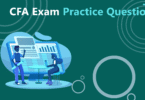Introduction
The Trump Education Plan has been a major topic of discussion in recent years. As the world of education evolves with changing policies and technologies, understanding these shifts becomes even more important. Trump’s approach to education brings a new focus on traditional values, school choice, and reducing federal control. This plan also puts attention on improving access to books and resources and encouraging the use of tech & education solutions. Whether you’re a student, parent, or educator, it’s essential to explore how this plan could affect learning environments across the country.
What Is Trump Education Plan ?

The Trump Education Plan is a set of policies and proposals introduced by Donald Trump during his presidency and further discussed in his campaign for future elections. The plan focuses on giving more power to parents and local governments when it comes to educational decisions. It promotes school choice, reduces the role of federal authorities in education, and supports vocational education programs.
- One of the major goals of the plan is to allow students and parents the freedom to choose the school that best fits their needs—whether it’s a public, private, charter, or religious school. Trump has emphasized the importance of education tailored to individual learning styles and needs, believing that a one size fits all approach does not work.
- The Trump Education Plan also supports the use of modern tools such as technology in classrooms, improved access to books and resources, and focusing on skills that prepare students for real world jobs.
you may also like this:
https://educationbeing.com/category/educational-news
https://educationbeing.com/category/books-and-resources
Why Is Trump Education Plan Important
Understanding the importance of the Trump Education Plan helps us evaluate how it may shape the future of learning. Here are some key reasons why this plan is considered important:
Promotes School Choice
- It allows families to choose the school that best suits their children, regardless of income level or neighborhood.
Reduces Federal Involvement
- Shifts decision making power from federal authorities to local schools and parents.
Focuses on Vocational Training
- Encourages students to learn skills that can lead directly to jobs, rather than only focusing on college degrees.
Supports Charter and Private Schools
- Offers funding options and resources to support alternative school systems.
Encourages Technology in Education
- Promotes the use of modern tech tools to enhance classroom learning and online education.
Empowers Parents
- Gives parents a stronger voice in their child’s education process.
Addresses Failing Public Schools
- Provides options for students in low performing schools to seek better educational opportunities.
Promotes American Values
- Supports curriculum that reflects American history, values, and culture.
Improves Learning Materials
- Encourages schools to offer better books and resources to enhance student knowledge.
Increases Accountability
- Demands higher standards and outcomes from schools to ensure quality education.
Advantages Of Education And Disadvantages
Education has a vital role in shaping individuals and society. While there are many benefits, some challenges still exist. Here is a detailed look at both:
Advantages
| Improves Communication Skills Students learn how to express themselves clearly through reading and writing. |
| Promotes Equality Education provides everyone a chance to improve their status, regardless of background. |
| Supports Democracy Education teaches people about their rights and responsibilities, which supports a healthy democratic system. |
| Technological Advancement With education, individuals can develop and use new technologies effectively. |
| Better Decision Making Knowledge gained from education allows people to make informed decisions in their personal and professional lives. |
| Economic Growth Educated populations contribute to the economic success of their countries. |
| Social Benefits Educated individuals tend to be more active in society, contributing positively to community development. |
| Improved Thinking Skills Education enhances problem solving and critical thinking abilities. |
| Career Opportunities A good education opens doors to higher paying jobs and professional growth. |
| Knowledge Development Education helps individuals gain knowledge across various subjects which leads to better understanding and awareness. |
Disadvantages
| Student Loan Debt Many students graduate with heavy debt, which becomes a long term financial burden. |
| Cultural Bias Educational content may sometimes reflect a narrow cultural perspective, excluding diverse voices. |
| Technological Distractions While tech & education can be helpful, it can also lead to distractions and reduced face to face interaction. |
| Outdated Content Some educational institutions still use old books and resources, which may not be relevant today. |
| Less Focus On Creativity Traditional education systems may suppress creativity by focusing too much on memorization. |
| Rigid Curriculum A one size fits all approach in education does not suit every learner’s needs. |
| Overemphasis On Degrees Sometimes, practical skills are undervalued in favor of formal degrees. |
| Inequality Not everyone has the same access to educational resources, leading to gaps in achievement. |
| Pressure And Stress Competitive academic environments may lead to anxiety and burnout in students. |
| High Cost Access to quality education can be expensive and out of reach for many families. |
A Step By Step Guide

If you’re trying to understand or follow the Trump Education Plan, here’s a step by step guide to break it down clearly:
Step 1: Learn About School Choice
- Understand what school choice means and how it allows families to choose between public, private, charter, or religious schools.
- Research local school options in your area.
Step 2: Explore Funding Programs
- Look into government programs that support school vouchers or education savings accounts (ESAs).
- Apply for financial aid if available.
Step 3: Evaluate Local vs. Federal Control
- Know how local school boards operate and how decisions are made without federal involvement.
- Attend school meetings to stay informed.
Step 4: Consider Vocational And Skill Based Education
- Look for schools or programs that offer hand son skills and job training.
- Encourage high school students to explore apprenticeships or certificate programs.
Step 5: Use Technology In Learning
- Embrace digital tools and online learning platforms.
- Integrate educational apps, videos, and e books into learning routines.
Step 6: Focus On Curriculum Values
- Review the curriculum for American history, civics, and traditional values.
- Engage in discussions about what your children are learning in school.
Step 7: Improve Access To Learning Materials
- Make sure students have access to updated books and resources.
- Support school libraries or donate to community education funds.
Step 8: Track Performance And Accountability
- Monitor student performance through regular progress reports.
- Support initiatives that evaluate school performance and teacher effectiveness.
Step 9: Get Involved As A Parent
- Participate in parent teacher conferences and local school board meetings.
- Advocate for better education policies in your community.
Step 10: Stay Updated On Policy Changes
- Follow news about tech & education reforms and updates to the Trump Education Plan.
- Be aware of how changes in leadership or government might affect school policies.
Challenges And Their Solutions
Every educational plan faces obstacles, and the Trump Education Plan is no different. Here are some key challenges along with practical solutions:
Lack of Awareness
Many parents and educators are unfamiliar with the details of the plan.
Solution
Create easy to understand guides and conduct awareness campaigns through schools and media.
Limited Access in Rural Areas
Some communities lack charter or private school options.
Solution
Invest in expanding school choice programs in underserved regions and support online education models.
Unequal Opportunities
Low income families may not have equal access to quality education choices.
Solution
Increase availability of vouchers and financial assistance programs for disadvantaged families.
Resistance from Public School Advocates
Public education supporters worry about reduced funding and attention.
Solution
Balance reforms by ensuring public schools also receive proper support and improvement efforts.
Misuse of Funds
There is concern over accountability in managing education funding.
Solution
Implement strict monitoring systems to ensure proper use of education funds and grants.
Curriculum Controversies
Critics argue the plan might push specific political or cultural values.
Solution
Include diverse viewpoints and ensure transparent review of learning materials.
Inconsistent Quality in Charter Schools
Not all alternative schools provide high quality education.
Solution
Establish and enforce strong standards for all schools receiving public funds.
Technology Barriers
Not every student has access to reliable internet or devices.
Solution
Distribute free or affordable digital tools to students in need.
Teacher Training Gaps
Teachers may not be prepared to adjust to new policies or techbased learning.
Solution
Offer regular training programs and professional development opportunities.
Political Instability
Education policy can change quickly with shifts in leadership.
Solution
Build long term strategies with bipartisan support for lasting impact.
Future Of Trump Education Plan
The future of the Trump Education Plan depends on political developments, public support, and policy adjustments. However, some possible directions include:
- Continued focus on school choice programs across states
- Wider adoption of tech & education tools in classrooms
- Expansion of vocational and skills based training options
- Greater emphasis on parental involvement in decision making
- Adjustments to curriculum that reflect American history and values
- Increased collaboration between public and private education sectors
If executed properly, the plan could offer more educational freedom and tailormade learning experiences, helping prepare students for real world challenges.
Frequently Asked Questions (FAQs)
How does school choice work in the Trump Education Plan?
The Trump Education Plan allows parents to choose the best schools for their children—whether public, private, charter, or religious—using government funded vouchers or similar options.
Will public schools lose funding under the Trump Education Plan?
There is a risk that the Trump Education Plan could shift funding toward school choice programs, but balanced decisions and careful budgeting can help ensure public schools still receive necessary support.
What role does technology play in the Trump Education Plan?
Technology plays a key role in the Trump Education Plan by promoting online learning platforms, digital tools, and tech based classroom resources to enhance education.
Who benefits most from the Trump Education Plan?
Students in failing schools, low income families, and those looking for vocational or flexible learning paths benefit most from the Trump Education Plan’s focus on educational freedom and options.
Does the Trump Education Plan affect curriculum content?
Yes, the Trump Education Plan encourages curriculum reforms that focus on traditional American values and may change how core subjects like history and civics are taught.
Is the Trump Education Plan currently in effect?
While some aspects of the Trump Education Plan are still influential, full implementation depends on current political leadership and legislative support.
How does the Trump Education Plan support vocational education?
The Trump Education Plan promotes hand son learning by encouraging training in skilled trades and job ready programs that do not require a traditional four year degree.
Are there concerns about school quality under the Trump Education Plan?
Yes, one concern about the Trump Education Plan is that not all charter or private schools maintain consistent quality. This is why strong accountability standards are essential.
How can parents get involved in the Trump Education Plan?
Parents can support the Trump Education Plan by attending school board meetings, staying informed on local education policies, and actively participating in school related decisions.
What makes the Trump Education Plan different from traditional education policies?
The Trump Education Plan focuses on decentralizing education, increasing school choice, and incorporating modern tools like tech & education, setting it apart from more centralized, one size fits all systems.
Conclusion
The Trump Education Plan offers a different direction for the future of education by promoting school choice, local control, and the use of books and resources alongside tech & education. While the plan has both supporters and critics, its focus on flexibility, skill building, and parental involvement can reshape how students learn and succeed. It’s important for families, educators, and policymakers to stay informed and engaged in shaping what comes next.
Ten Bonus Tips
Learn About Your School Options
Understand what choices are available in your district and how they can benefit your child.
Apply for Scholarships or Vouchers
Use available financial programs to access better schools or educational tools.
Embrace Online Learning
Take advantage of digital platforms to support or supplement traditional education.
Attend Parent Teacher Conferences
Stay involved and informed about your child’s academic progress.
Explore Vocational Education
Look into skill based training for practical career paths.
Balance Tech With Traditional Learning
Use tech tools but also encourage reading books and hand son activities.
Keep Learning Materials Updated
Ensure your child has access to the latest books and resources for their studies.
Encourage Independent Thinking
Support activities that develop problem solving and critical thinking.
Monitor Education Policies
Follow news and updates about education reforms in your area.
Support Local Schools
Even if choosing alternatives, find ways to contribute to public school improvements.







